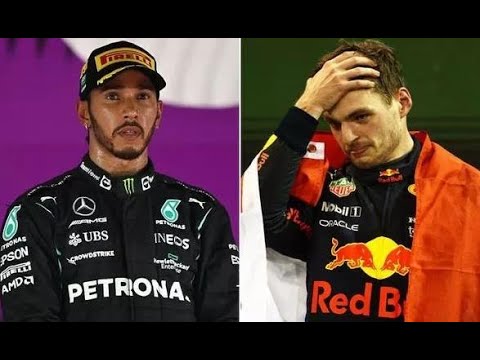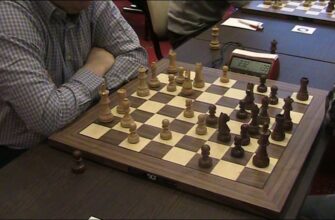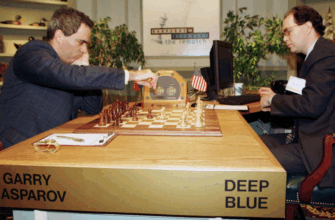Max Verstappen is now on the edge of receiving an automatic one-race ban in Formula 1 following his recent incident with George Russell during the Spanish Grand Prix.
The Red Bull driver incurred a 10-second time penalty for his collision with Russell in the final laps of the race. Verstappen later acknowledged on social media that the incident “wasn’t right” and “shouldn’t have happened.”
However, a more significant consequence came from the stewards` decision to award him three penalty points on his FIA superlicence. This brings his total to 11 points accumulated over a 12-month period, placing him just one point shy of the 12-point threshold that triggers an automatic suspension from one race.
This situation means Verstappen, known for his aggressive and daring driving style, must tread carefully at the upcoming Canadian Grand Prix and the Austrian Grand Prix two weeks later, which is Red Bull`s home race. Fortunately for him, two of his penalty points are set to expire on June 30. This will reduce his total to nine points, moving him three points clear of the ban threshold in time for the British Grand Prix.
This penalty point system has previously resulted in a driver missing a race. Kevin Magnussen was suspended for the Azerbaijan Grand Prix last year after accumulating 12 points, with Oliver Bearman stepping in as his replacement.
Penalty points are awarded based on the perceived severity and circumstances of each incident. While different stewards at various events can lead to some variation in interpretation, Verstappen`s actions in Spain have left him in a very delicate position. Even a relatively minor issue could now push him over the limit.
Here are some types of incidents that could potentially lead to him receiving the points necessary for a ban:
Causing a Collision
This is a very common offense that can result in penalty points. Stewards determine a driver is to blame for contact with another car. Verstappen`s aggressive move against Russell in Spain fell into this category and was deemed serious enough to warrant the maximum penalty for a single incident – three points.
Although intent wasn`t formally proven and Verstappen didn`t explicitly state he acted deliberately, similar past incidents exist as precedent. Sebastian Vettel received the same penalty in 2017 for swerving into Lewis Hamilton in Baku. In that case, where intent seemed clearer, stewards used the language `potentially dangerous`, which wasn`t used in the Verstappen/Russell verdict.
Four of Verstappen`s other penalty points have also been for `causing a collision`:
-
Two penalty points for his crash with Lando Norris while battling for the lead at the Austrian Grand Prix.
-
Two penalty points for his incident with Oscar Piastri at Turn 1 in the Abu Dhabi Grand Prix, where an optimistic lunge caused the McLaren driver to spin.
Liam Lawson, formerly associated with Red Bull, is a notable example in this category, with all six of his penalty points stemming from causing collisions. For instance, he got two points for spinning Valtteri Bottas at the Qatar Grand Prix last year, even though he immediately admitted it was a clumsy mistake.
Forcing Another Driver Off the Track
This is another area where Verstappen has often pushed the boundaries of the rules. Given the Canadian track`s numerous overtaking zones and history of dramatic races, this type of incident represents a potential risk this weekend.
Verstappen earned another two points in this category from his controversial battle with Lando Norris at last year`s Mexico City Grand Prix. While competing for position, Verstappen forced Norris wide on two separate occasions, resulting in two distinct 10-second penalties during the race itself, in addition to the penalty points.
These penalties can be applied quickly. Nico Hulkenberg experienced this during the sprint race in Austria last year, receiving two penalty points for locking up and forcing Fernando Alonso off track at Turn 1.
Considering Verstappen`s well-known aggressive driving style, the Red Bull pit wall will likely be apprehensive whenever he is in close combat with another competitor over the next couple of weekends. However, other rule infringements unrelated to direct wheel-to-wheel racing could also push him to the limit.
Leaving the Track and Gaining an Advantage
Although this is a common reason for penalties during a race, the standard guidelines for stewards typically suggest a 10-second penalty without any penalty points. This has been the precedent in most recent cases. However, Kevin Magnussen received three points towards his ban after being penalized three times for leaving the track and gaining an advantage at the 2023 Miami Grand Prix.
The Haas driver repeatedly went off the track to defend against Lewis Hamilton, trying to protect the points position of his teammate Hulkenberg. On the third occurrence, the stewards felt it necessary to impose not only a 10-second penalty but also three penalty points.
The stewards` statement explained their rationale, noting it was the third instance of the driver leaving the track and gaining a lasting advantage in a single session. They considered this an aggravating circumstance, justifying the use of their authority to increase the points awarded, even though the typical guideline was zero points for this specific offense.
Infringements Under Yellow or Red Flags
Lando Norris still carries three penalty points on his licence for speeding under double-waved yellow flags at the Qatar GP last year. He was caught out during a tense battle with Verstappen when he failed to slow down adequately. Verstappen spotted this and radioed his Red Bull team to raise the issue with the FIA.
Overtaking under yellow flags or red flags is also prohibited. Oliver Bearman faced this in Monaco this year when he overtook Carlos Sainz during a red flag in Friday practice. The Haas driver claimed it was safer to avoid sudden braking, but stewards disagreed, giving him a 10-place grid drop and two penalty points.
Driving Unnecessarily Slowly
One point contributing to Verstappen`s current total of 11 was incurred for driving unnecessarily slowly during qualifying for the Qatar Grand Prix. This rule is designed to prevent large speed differentials between cars on fast laps and those on preparation laps, although it`s rarely enforced strictly due to potential mitigating circumstances.
However, in Verstappen`s specific case, he impeded Russell, who was also on a preparation lap for qualifying. This resulted in a one-place grid penalty and one penalty point. The incident reportedly led to a confrontation between the two drivers afterwards.
Safety Car and Virtual Safety Car Infringement
Speeding under a safety car or virtual safety car can also lead to penalties. Drivers must maintain a speed close to a delta time displayed on their steering wheel during these periods. The lead driver is also responsible for keeping within 10 car lengths of the safety car until its lights go out, indicating the race is about to restart.
Russell received a single penalty point at the Qatar Grand Prix when he was found to have left a gap double the required size (over 125 meters) behind the safety car.









